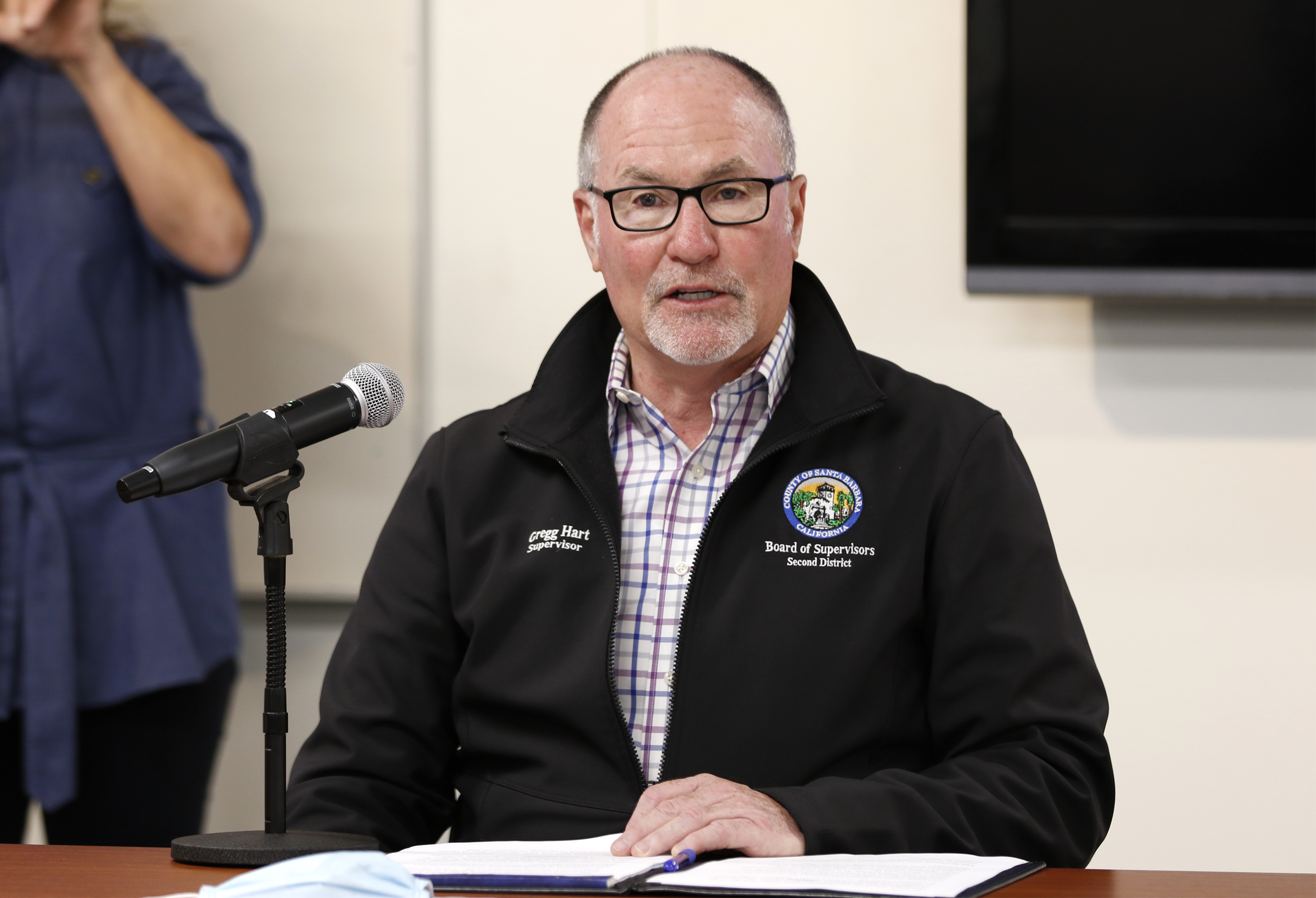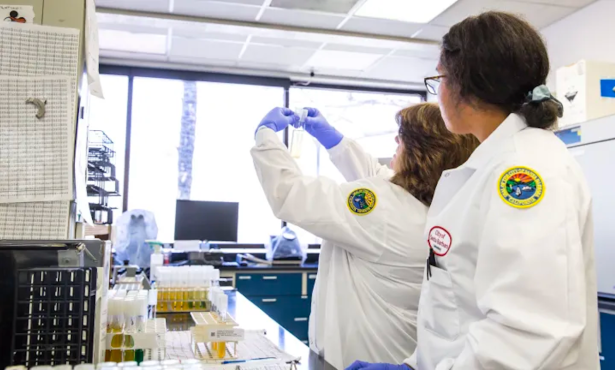Santa Barbara County Takes First Shot at Reopening
Board of Supes Votes to Make Its Case to Governor Newsom

Santa Barbara County residents are still stuck on the rickety pandemic roller coaster racked with unpredictable turns, but the ride hit a new peak Tuesday — the county has its first shot at taking local control over reopening businesses.
“This is an extraordinary achievement in an incredibly short period of time,” 2nd District Supervisor Gregg Hart said. “In fact, I can say with certainty that nothing like this has ever been accomplished in our community. Normally our community dialogue … takes years to bring to a resolution.”
The achievement Hart was referring to is the county’s RISE, or Reopening in Safe Environment, Guide, which was created in just three weeks. The Santa Barbara–specific guide to reopening businesses was released to the public Friday and presented to the Board of Supervisors Tuesday. It is a fluid document that will change constantly with new state and federal regulations, as well as input and feedback from the public.
The county contracted with Reach, a nonprofit economic development think tank, to work with 350 area stakeholders from sectors such as education, faith institutions, lodging, agriculture, building and development, and beverage and restaurant industries. The stakeholders collectively shared their expertise and input before the drafts were submitted to an independent medical and public health expert panel for vetting.
“I don’t think it’s by accident this was achieved so quickly and so well,” Hart said. “This is a moment everybody is stepping into in extraordinary ways and putting aside some of the old drama that comes with those dialogues and really working together in a unique and special way.”
The guide will be submitted as part of the county’s attestation to Governor Gavin Newsom to gain more local control over the way businesses reopen in the county. If the state approves, the county will be able to more quickly move through phase two of the state’s four-phased reopening plan. The board unanimously voted to send the attestation Tuesday. Though it was clear the county meets all criteria, it is unclear how many days it may take to get approval.
Melissa James, president and CEO of Reach, described the crammed planning process as having “pieces of the puzzle, but never the whole picture.” The governor’s criteria and timeline for reopening changed several times throughout the three weeks the RISE Guide was created, so the large group had to pivot its process several times to keep up.
The most recent turn on the COVID-19 roller coaster, though, was in the county’s favor toward reopening. Just one day prior, Newsom agreed to loosen his criteria for attestation and separate the Lompoc Prison inmate cases from the rest of the county’s cases. The prison has accounted for the vast majority of cases countywide and drastically skewed the county’s data and ability to move forward with reopening.
If the attestation is successful, decisions around opening dine-in restaurants and destination retail spots such as malls and shopping centers will be up to the county to decide. Though many feel the reopening process is long overdue, some feel this new step is being taken too soon.
“I walk the streets of Santa Barbara, and I find that so many people aren’t following the basic things that are encouraged by the state right now, and I feel [reopening] is just going to be a madhouse,” said Patrica Owens at public comment.
Owens was one of several public commenters who were passionate about slowing down the reopening process. They all echoed similar messages — the enforcement of public health orders is not strong enough now, let alone when more businesses open. Many, including Owens, feared that tourists from L.A. would continue to come to Santa Barbara and spread the disease on weekend trips, while others were upset the Lompoc cases were separated because of the potential for inmates in area intensive care unit beds to spread the disease into the community, too.
But then there were commenters fiercely supportive of moving through the governor’s phase two. Some even criticized the county for abiding by the phases at all and pushed to reopen more, including conservative county watchdog and congressional candidate Andy Caldwell, who mocked the board for showing gratitude toward “King Newsom.”
“There are people chastising us for bankrupting the county because we’re going too slow, and there’s others chastising us for putting the county at increased risk because we’re moving too fast,” said 5th District Supervisor Steve Lavagnino. “This has been a really interesting two months to be in a leadership role.”
First District Supervisor Das Williams has emerged as a pandemic moderate in recent weeks. He called the RISE Guide a “reasonable balance” between health concerns and economic concerns and emphasized that “setting new patterns” is what will allow residents to stay healthy but still get on with their lives.
“We are beating the disease,” Williams said. “It’s not because of the course of power of government; it’s not because we have the course of power to make you do these things. It’s because the people of the county have harkened the cry of public health and have cooperated.”
While the 80-page RISE Guide is comprehensive, it isn’t perfect. Local business stakeholders, health-care providers, and the county are getting new information about different sectors each day. Public Health Officer Dr. Henning Ansorg, a stoic character who rarely smiles, let out a rare chuckle on Tuesday when he said that “no document is valid for more than a week now, apparently.”
With that in mind, some of the more gray-area sectors can’t be addressed by the guide yet. The wine industry, for example, is not allowed to open until phase three, making it separate from the restaurant industry in phase two. Yet, as 3rd District Supervisor Joan Hartmann pointed out, wine tasting rooms are more posed for social distancing than some restaurants are.
“Most of the wine tasting rooms I know are usually a few people at a time, and it’s really easy to socially distance in that setting,” Hartmann said. “I intend to write a letter, I don’t know if anyone else wants to sign it with me, but just saying that they fit more the restaurant idea so long as they can social distance. It’s not like a crowded bar, and I think that’s a fallacy in the reasoning.”
Faith organizations are also an unknown sector. Although churches are still a part of later phases on Newsom’s plan, virtual faith gatherings and car services are allowed. The county is currently inquiring with the state about responsible ways to social distance and congregate.
All in all, though, the plan serves its purpose and gives local businesses enough guidelines to meet reopening criteria in time for the governor’s green light.
Though the supervisors unanimously accepted the document and included it with the attestation, 4th District Supervisor Peter Adam was the lone dissenter opposed to the RISE Guide and, more specifically, to the governor’s requirement for the county to use contact tracing to “box in” the disease.
“I do disagree vehemently, despite all my silence earlier, with the whole strategy and I really want to restate my concerns that we’re causing more dislocation in economic ways to a tremendous amount of our citizens by doing it this way, but I realize I don’t carry the day here,” Adam said. “I just think by doing it this way, we’re causing stuff that you aren’t going to see until October or November or December in the form of foreclosures and bankruptcies.
“And I find it Orwellian, the track and trace thing. The idea we are going to box in anything that is that prevalent in the community is absurd.”
Contact tracing — or “track and trace” as Adam referred to it as — has been used for decades to mitigate infectious diseases, including common ones such as tuberculosis, said Ansorg. He said the county currently has 65 contact tracers with more county employees in training in order to meet the governor’s standards.
Public Health Director Van Do-Reynoso also chimed in, reminding Adam that boxing in the spread of the disease through contact tracing is not just the intent of the county, but “the intent of our state, of our nation, and of our world.” As with nearly every public health report to the Board of Supervisors, Adam wasn’t buying it.
“I don’t think there’s a more effective way to box in a virus than in a prison, and we can see how that’s been going,” he said. “It’s obvious that boxing is an irrational strategy and I’m going to post that on my facebook page.”
At the Santa Barbara Independent, our staff is working around the clock to cover every aspect of this crisis — sorting truth from rumor. Our reporters and editors are asking the tough questions of our public health officials and spreading the word about how we can all help one another. The community needs us — now more than ever — and we need you in order to keep doing the important work we do. Support the Independent by making a direct contribution or with a subscription to Indy+.


